Potřebujeme váš souhlas k využití jednotlivých dat, aby se vám mimo jiné mohly ukazovat informace týkající se vašich zájmů. Souhlas udělíte kliknutím na tlačítko „OK“.
ASTM C702/C702M-11
Standard Practice for Reducing Samples of Aggregate to Testing Size
Automaticky přeložený název:
Standardní praxe pro snižování Vzorky agregátu na testování velikosti
NORMA vydána dne 1.8.2011
Informace o normě:
Označení normy: ASTM C702/C702M-11
Poznámka: NEPLATNÁ
Datum vydání normy: 1.8.2011
Kód zboží: NS-14671
Počet stran: 5
Přibližná hmotnost: 15 g (0.03 liber)
Země: Americká technická norma
Kategorie: Technické normy ASTM
Kategorie - podobné normy:
Anotace textu normy ASTM C702/C702M-11 :
Keywords:
aggregate, aggregate-coarse, aggregate-fine, field testing-aggregate, sampling-aggregates, sample reduction, specimen preparation, ICS Number Code 91.100.30 (Concrete and concrete products)
Doplňující informace
| Significance and Use | ||||||||
|
Specifications for aggregates require sampling portions of the material for testing. Other factors being equal, larger samples will tend to be more representative of the total supply. This practice provides procedures for reducing the large sample obtained in the field or produced in the laboratory to a convenient size for conducting a number of tests to describe the material and measure its quality in a manner that the smaller test sample portion is most likely to be a representation of the larger sample, and thus of the total supply. Failure to carefully follow the procedures in this practice could result in providing a nonrepresentative sample to be used in subsequent testing. The individual test methods provide for minimum amount of material to be tested. Under certain circumstances, reduction in size of the large sample prior to testing is not recommended. Substantial differences between the selected test samples sometimes cannot be avoided, as for example, in the case of an aggregate having relatively few large size particles in the sample. The laws of chance dictate that these few particles may be unequally distributed among the reduced size test samples. Similarly, if the test sample is being examined for certain contaminants occurring as a few discrete fragments in only small percentages, caution should be used in interpreting results from the reduced size test sample. Chance inclusion or exclusion of only one or two particles in the selected test sample may importantly influence interpretation of the characteristics of the original sample. In these cases, the entire original sample should be tested. |
||||||||
| 1. Scope | ||||||||
|
1.1 This practice covers three methods for the reduction of large samples of aggregate to the appropriate size for testing employing techniques that are intended to minimize variations in measured characteristics between the test samples so selected and the large sample. 1.2 The values stated in either SI units or inch-pound units are to be regarded separately as standard. The values stated in each system may not be exact equivalents; therefore, each system shall be used independently of the other. Combining values from the two systems may result in non-conformance with the standard. Note 1—Sieve size is identified by its standard designation in Specification E11. The alternative designation given in parentheses is for information only and does not represent a different standard sieve size. 1.3 This standard does not purport to address all of the safety concerns, if any, associated with its use. It is the responsibility of the user of this standard to establish appropriate safety and health practices and determine the applicability of regulatory limitations prior to use. |
||||||||
| 2. Referenced Documents | ||||||||
|
Podobné normy:
Historická
15.4.2014
Historická
1.11.2009
Historická
15.12.2011
Historická
1.6.2014
Historická
1.4.2011
Historická
1.4.2008
Odebírejte informace o nově vydaných normách ZDARMA:
Chcete pravidelně odebírat informace o nově vycházejících normách z celého světa a to zcela zdarma?
Přihlašte se k odběru. Vše je velice jednoduché a absolutně ZDARMA.
Na výběr máte vydavatele z celého světa.


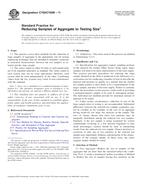
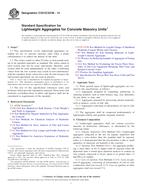 ASTM C331/C331M-14..
ASTM C331/C331M-14..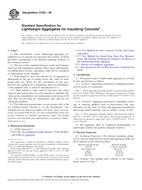 ASTM C332-09
ASTM C332-09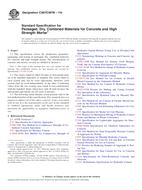 ASTM C387/C387M-11b..
ASTM C387/C387M-11b..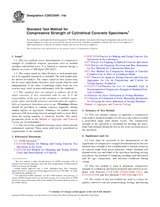 ASTM C39/C39M-14a..
ASTM C39/C39M-14a..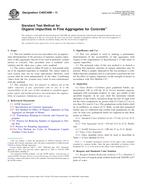 ASTM C40/C40M-11..
ASTM C40/C40M-11..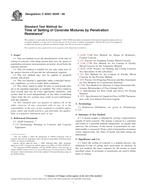 ASTM C403/C403M-08..
ASTM C403/C403M-08..
 Cookies
Cookies
